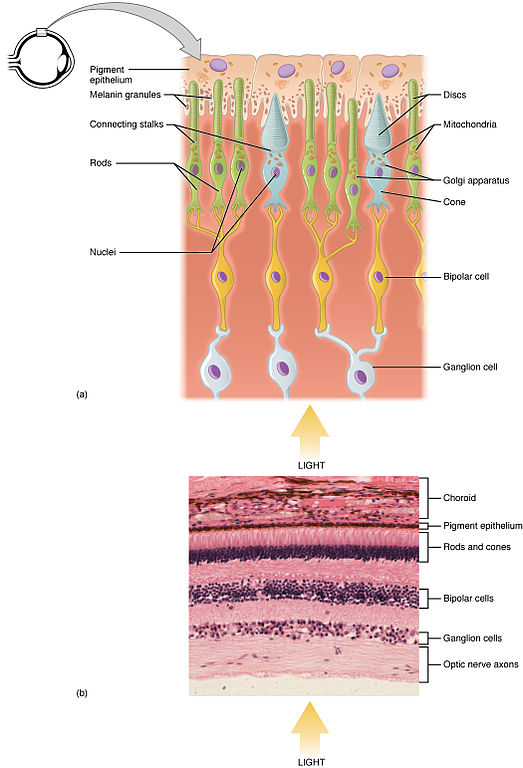Hereditary retinal dystrophies
4. Cone dystrophy
In cone dystrophy there is a progressive degeneration of the cone system, initially healthy at birth. It has a prevalence of 1/40,000.
The age of onset varies in between the second and seventh decade, with a worse prognosis and faster progression when the onset is earlier.
The diagnosis results from the aggregation of clinical data, such as a progressive and symmetric loss of vision, color perception deficit, and photophobia, together with the findings in the eye fundus that can range from normality to macular atrophy in "bull's eye" shape, and tests such as FAG and AF where we will see alterations at the macular level even before they are visible in the eye fundus. The ERG is the test of choice, in which a reduction or total absence of the photopic response, dependent on the photoreceptors, and a normal scotopic response, produced by the rods, are observed.
We conduct the follow-up of these patients on an annual basis, with refraction under cycloplegia, an eye fundus study, a colour test (Farnsworth) that allows us to study the state of the macula, and tests such as OCT, AF and ERG that help us to know and quantify the degree of affectation of the photoreceptors.

Most cases show no family history, being sporadic. If there is a family history, inheritance is usually autosomal dominant or X-linked. More than 30 mutations have been described, with 4 genes most frequently involved:
- ABCA4 (autosomal recessive inheritance)
- GUCY2D and CRX (autosomal dominant inheritance)
- RPGR (X-linked inheritance)
Regarding treatment, it has been seen that treatment with carbonic anhydrase inhibitors such as oral acetazolamide can help resolve the macular edema that these patients sometimes present, although we have not been able to replicate these results in our clinical practice either.
As far as gene therapy is concerned, a study has recently been published with intravitreal injections and systemic administration in mice of a vector with a gene that encodes a molecule secreted by the rods that seems to be involved in the protection of the cones.